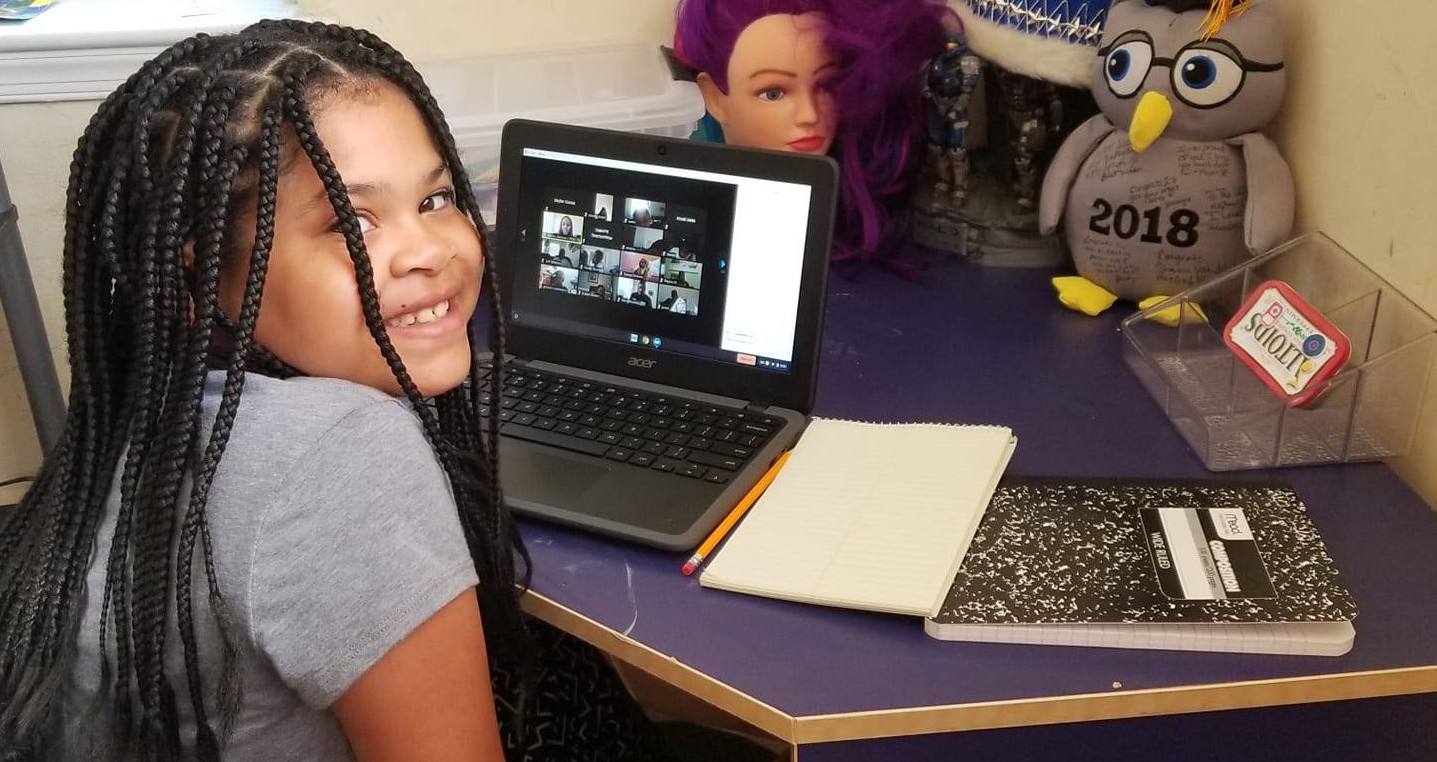
Introducing Distance Learning Plus
by Preston Smith, Co-Founder and CEO, Rocketship Public Schools
Last month, all Rocketship schools across the country opened in distance learning. We took the best features from our spring program and added new approaches for this school year. Our Distance Learning Plus program features:
- 3 hours of live teaching per day. As we learned last spring, daily live teaching is critical to promote student engagement, social-emotional development, and interaction with classmates.
- Chromebooks for every student. It is our duty to make sure that all Rocketeers can access their learning – no matter if that’s on campus or online. That’s why we invested in purchasing additional Chromebooks to give every Rocketeer a device. Combined with helping connect families to low-cost or free wifi, we are proud that over 99% of our students have a device and internet access.
- Increased, daily social-emotional learning. The COVID-19 crisis disproportionately impacts our low-income Black and brown families, often compounding existing layers of trauma. With at least 45 minutes per day of live social-emotional learning lessons, our mental health professionals and educators are partnering to make sure all of our Rocketeers’ needs are met.
- Innovative virtual enrichment for all. The on-campus school day at Rocketship is about more than just core academics – we also give our Rocketeers enrichment opportunities that help grow their love of learning. Online, it’s no different. Every Rocketeer can join different enrichment clubs on their campus to explore new interests with their friends. Our innovative educators lead Rocketeers in trying American Sign Language, perfecting their acting skills, exploring nature, practicing yoga and mindfulness, coding, and learning creative writing, art, chess, and more.
- Virtual support and development for our educators. We know that distance learning requires our educators to learn new skills and adapt their teaching in new ways. That is why we set aside multiple hours per day and one full day per week for self-care, lesson planning, professional development, and coaching. We know that when our teachers are at their best, our students are at their best. We remain committed to fully supporting our teachers and staff throughout this unprecedented crisis and beyond.
Our new and improved distance learning model builds on the solid foundation to virtual learning we launched last March. A new report from the Fordham Institute, Schooling Covid-19, featured Rocketship and the strengths of our initial model in an effort to help other educators learn from our approach:
“What we need are concrete recommendations for how to significantly improve the remote learning experience for students, teachers, and families. That is what the present report aims to provide, with ideas culled from educators who achieved striking success in the face of the viral challenge this spring…networks featured in this analysis achieved remarkable success, transitioning quickly and effectively to remote learning. All were up and running with online instruction within days of the mid-March shutdowns. Together, they distributed tens of thousands of devices and Internet hotspots, and they offered a robust mix of live and recorded instruction, which led to high levels of student engagement. Their teachers and leaders, though exhausted, embraced the chance to innovate like they hadn’t in years.”
Bellwether Education Partners also recently highlighted our distance learning model as an exemplar of ‘promising practices’ to further improve distance learning in their new report, Promise in the Time of Quarantine: Exploring Schools’ Responses to COVID-19. Rocketship is showcased as a school that thrived in this challenging time, as, “Teachers adapted their instructional practices to virtual environments, special education specialists reworked Individual Education Programs (IEPs), and schools evolved their design and approaches to better fit students’ and families’ needs. And schools became more than a place for education: They distributed computers and tablets, brokered deals with internet providers, set up emergency relief funds, delivered meals, provided trauma counseling, and facilitated connections with social safety nets.”
Published on October 2, 2020
Read more stories about: Distance Learning.


